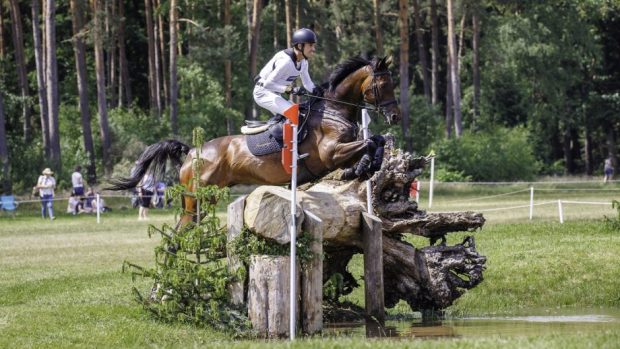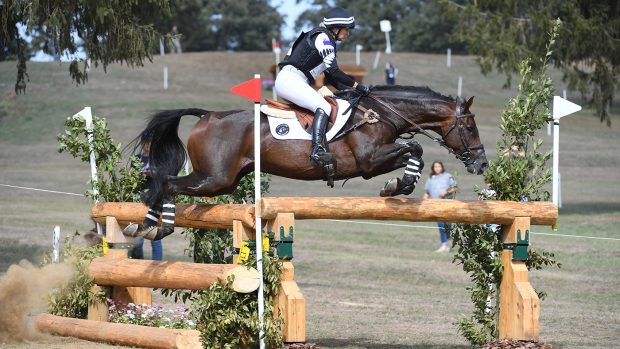H&H’s eventing editor Pippa Roome on correct terminology around this year’s championships, plus an idea to split four-star shorts
My big campaign for this summer is to stop everyone talking about the World Equestrian Games (WEG).
WEG brought together the World Championships in multiple different equestrian sports every four years between 1990 and 2018. From 2022, different disciplines will hold their World Championships in different places, at different times. Sometimes two or more disciplines may hold a combined championship. This is what happened before 1990.
This year will see the showjumping world championships, dressage world championships, para dressage world championships and vaulting world championships all taking place across two consecutive weeks in Herning in Denmark. The driving and eventing world championships will run across two consecutive weeks at Pratoni in Italy. Italy will also host the endurance world championships at Verona.
None of the events before 1990 or after 2018 are correctly referred to as WEG – they are simply World Championships.
WEG is a term unique to horse sport and, I suspect, was difficult for the wider public and mainstream media to understand quickly. World Championship is much more aligned to other sports and easy to comprehend, so now that it’s also the only correct way to refer to these events, let’s all stop saying WEG and get on board with referring to our World Championships instead.
An idea for the melting pot
Eventing is mired in big questions over the future of the sport, what level of risk is acceptable and how to ensure horses and riders are appropriately qualified to move up the levels (feature, p32, Thursday 14 July H&H magazine; opinion 16 June and 30 June H&H magazine).
My colleague Catherine Austen recently made an intelligent comment that varying degrees of difficulty within five-star are acceptable – it’s widely recognised that Luhmühlen Horse Trials is a step-up five-star, compared to tougher courses at Badminton Horse Trials and Burghley Horse Trials. That serves a purpose for those graduating to the level or simply a different type of top horse.
But, she added, four-star tracks must be consistent, because they offer qualifications for five-star. Substandard courses at that level will only lead to combinations getting in trouble at five-star.
Pondering this, I wondered if there might be something in upgrading the weaker four-star long courses so they truly meet the criteria, but simultaneously recognising that four-star short is a difficult level, which serves a wide variety of purposes.
There are young or inexperienced horses and riders moving up through it towards four-star long, plus riders using four-star short to give seasoned horses a testing (or confidence-giving) run before a championship or five-star.
Four-star short also serves as a showcase competition in its own right – with specialist horses for this level and older ones stepping down from long format mingling with championship and five-star campaigners – and brilliant spectator sport provided. Aachen is the prime example of this, alongside the now-defunct Event Rider Masters series.
I wonder if rather than trying to standardise four-star short, we should refine it into two levels. Four-star short minus could offer a slightly softer track, while four-star short plus would provide a sterner cross-country test.
Having recognised variation might give everyone more clarity on what to expect at competitions, plus qualifications for four-star long and five-star could be amended to reflect these different levels and ensure pairs are really ready to progress.
For example, to move up to four-star long, less experienced riders currently have to achieve qualifying results at either two three-star longs and a four-star short or one three-star long and two four-star shorts. New qualifications could demand that these must include at least one run at four-star short plus.
There are questions around how to define the two levels – I don’t think it’s as simple as different height and width limits, which might even be the same at both levels, as it’s more about technicality, terrain and “beefiness” than pure size.
I certainly don’t think this would solve eventing’s problems in one move and there are plenty of experts more qualified than me weighing up the issues, but it’s another idea to add into the melting pot.
• What do you think? Write to hhletters@futurenet.com to let us know
- This exclusive column will also be available to read in Horse & Hound magazine, on sale Thursday 14 July
You may also be interested in…

Eventing World Championships tickets 2022: your full guide to attending in person

Mark Phillips: Bramham and Luhmühlen – plus and minus on the star levels

Tom McEwen spearheads Brits’ Aachen eventing win, plus protest over top of individual leaderboard

Subscribe to Horse & Hound magazine today – and enjoy unlimited website access all year round
Horse & Hound magazine, out every Thursday, is packed with all the latest news and reports, as well as interviews, specials, nostalgia, vet and training advice. Find how you can enjoy the magazine delivered to your door every week, plus options to upgrade your subscription to access our online service that brings you breaking news and reports as well as other benefits.




